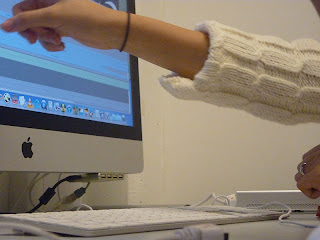To begin with while doing the digipak research I came to realise that non of the modern day hip hop, grime, dubstep artist similar to our artist actual use digipaks, CD packaging is definitely more common and perhaps because of the reason that most people are not use to having digipaks, whatever the reason may be unfittingly I couldn’t find any digipak examples so I analysed CD covers, the back, front, and the image on the actual CD, because there were no images that showed the inside of the album.
The first album I analysed was Stereo Typical by Rizzle Kicks. This band relates to our own artist in the sense that they do similar genre of music, upbeat hip hop, grime, and also have the same younger target audience of perhaps 15 – 28 year olds. There’s a constant colour theme of 2 main colours that are being used which means it doesn’t over do it with what there is on the cover and back. The colours are light, mutual which means they can appeal to any gender, and match with what the artists are wearing on the front cover image creating an over all blend. The font used when it comes to the album’s name reflects the young side of the artists and relates to our target audience; similarly the image used on the CD reflects the groups name with the whole kicks idea. Everything over all is kept simple and to the point with as less information as possible on the back of the CD cover.
The second album I will analyse is Tinie Tempah – Disco-Overy. Front the front and back cover we get a futuristic feel with a lot of effects being used to create light beams etc. This could relate to the target audience who are modern and young, the same as that of our own artist. Once again there is a maximum of three colours being used throughout the whole thing, with purple and blue dominating most of the over. These colours usually have passionate connotations which could therefore reflect perhaps the content of the CD. The back of the CD cover is similar to the one above kept simple with just the songs and production company names with a smaller shrift written at the bottom.
Finally the third album I will analyse is Example – Playing in the shadows. I chose to do this album because the artist is very similar to our one with his genre and target audience. Once again there’s only a few colours used in this case black, white, and yellow which in this particular case bring a serious mood to the album. The front cover also reflect the title of the album as half his face seems to be covered by a shadow. The image on the front of the album is pretty simple, however very affective in catching the eye and once you realise it also reflect the name of the album you begin to appreciate it even ore. This quirky side of the album will therefore appeal to the target audience who would be young adults. The font used for the writing throughout is very simple and easy to read, which is an important characteristic of a digipak because it means when someone is quickly looking through it in a shot they can do so without a problem of having too many different fonts or colours clashing as a result making it more difficult to read. Finally, the back of the album doesn’t include a lot of information apart from the name of the artist, album, song list and companies that produce it as well as the barcode.























































